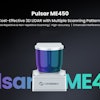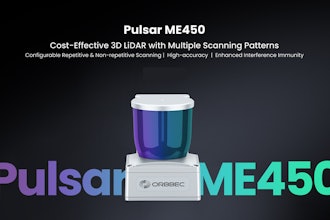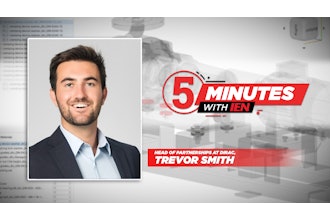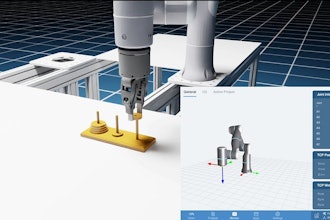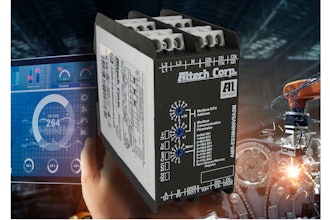www.newson-gale.com Page 1 of 3
W
h
it
e
P
a
p
e
r
l Cenelec CLC/TR 60079-32-1 (2015): Explosive
atmospheres - Part 32-1: Electrostatic Hazards - Guidance.
l API 2003 Eight Edition (2015): Protection Against Ignitions
Arising out of Static, Lightning, and Stray Currents, (2003),
(American Petroleum Institute).
More often than not, static caused fires and explosions result in
expensive production downtime, legal and insurance costs
related to personnel injuries & fatalities and damage to
company property. In numerous cases static caused fires have
led to the pollution of the local environment resulting in the loss
of public goodwill and the payment of heavy fines imposed by
local government. Under ATEX, the European Union's
legislation which governs the safety of personnel working in
hazardous atmospheres, everybody from suppliers to
company directors are open to criminal prosecution if a court
determines that adequate Best Practice procedures and
equipment have not been used to protect workers.
l NFPA 77 (2014): Recommended Practice on Static
Electricity,(National Fire Protection Association).
The standards are produced by committees made up of
industry experts in hazardous process safety and show
remarkable consistency in the precautionary measures
identified for controlling the generation of static electricity.
F o r e x a m p l e , i n t a n k t r u c k * t r a n s f e r s b o t h
CLC/TR: 60079-32-1 and API standards (NFPA references API
for tank truck transfers) recommend:
The overall cost of non-compliance can stretch far beyond
potential “savings” achieved by ignoring the risk of
electrostatic ignitions or by using non-compliant static control
methods.
1. The use of interlocks to stop flow of product preventing the
generation of static if the truck loses its earth** connection.
3. State the first operation in road tanker transfers is to apply a
full earth connection to the vehicle.
2. Monitoring the bonding/grounding circuit to less than 10
ohms and providing positive indication to operators that a
positive bond/ground connection is established.
Fortunately, there are three industry produced Best Practice
standards that provide the background to the nature of static
electricity, the processes that are susceptible to electrostatic
ignitions and the preventative measures that should be put in
place to eliminate static electricity as a health and safety risk.
The best practice standards are:
As recommended in each of the standards the most effective
method of eliminating spark gaps is to ensure all conductive
and semi-conductive objects are bonded and grounded with fit
for purpose static control equipment. The static control
equipment should be capable of making low electrical
resistance contact with charged equipment, combined with
maintaining secure and reliable low resistance static
dissipative circuits.
A good margin of safety can be assured by ensuring that static
dissipative circuits and their connections are regularly checked
for resistances greater than 10 ohms. The NFPA 77 and API
standards state electrical resistances higher than 10 ohms in
metal circuits are indicative of a break in the continuity of the
circuit, resulting in the potential and undesirable accumulation
of static electricity.
The API standard goes a step further stating the grounding
clamp should not be removed until the tank truck body is
sealed, i.e. removal of the grounding clamp should be the final
operation in the product transfer process.
‘Best Practice’ makes sound business sense:
How to avoid the real cost of non-compliance
in Static Control
Inquiry > Click here to submit a
product related query or a request
for quotation.
Author Details:
Mike O’Brien, Managing Director for Newson Gale
If you have any questions relating to the topics discussed
in this article, please contact .Newson Gale
www.newson-gale.com
To ensure complete protection from incendive spark discharges in
operations that require frequent processing of hazardous
materials the standards recommend continuous monitoring of
bonding/earthing circuits to 10 ohms or less. This ensures that a
proper bond or earth connection is established, preferably, before
the process is initiated, guaranteeing that an incendive spark will
not be discharged throughout the process.
Another area that can be can be confusing when specifying fit for
purpose static control equipment is identifying the difference
between hazardous area electrical protection approvals (ATEX,
FM, UL, CSA) and equipment designed to control electrostatic
ignitions. Approval classifications should not be confused with
specifying systems that demonstrate Best Practice compliance in
the area of static control. Hazardous area certification only
provides a method of protection that guarantee electrical faults are
prevented from igniting flammable atmospheres.
In a basic V = RI equation this makes sense, but when real world
effects are taken into account, the standards recommend static
dissipative circuits of 10 ohms or less.
The recommendation by all of the standards of monitoring up to
10 ohms is designed to compensate for the effect industrial
environments can have on the capacity of equipment to
dissipate static well before it has the potential to be a health and
safety risk.
l Human errors in following the correct static control
procedures.
l Infrequent or inadequate servicing of equipment.
l Degradation of circuits and connections resulting from
chemical, mechanical or environmental attack.
Some examples include:
l Inadequate mechanical penetration of electrostatically
charged equipment (more info on this in Technical Article
16).
The recommendation of utilising <10 ohm circuits should not be
6confused with the resistance of 1 x 10 ohms often referred to
throughout the standards. This is the generally accepted value of
resistance capable of dissipating static. This theoretical value is
based on the relatively small size of currents that generate static
charges in relation to the very high voltages they are capable of
inducing.
Page 2 of 3
‘Best Practice’ makes sound business sense:
How to avoid the real cost of non-compliance in Static Control
Liquid Gasoline 0.80
Minimum Ignition Energies (MIE) of regularly transported
gases, vapours and dusts in milli-joules (mJ).
Sulphur 15
Epoxy resin 9
Propane 0.25
Hexane 0.24
Zirconium 5
Gas Propanol 0.65
Hydrogen 0.011
Methane 0.28
Acetylene 0.017
Vapour Ethanol 0.65
Ethyl acetate 0.46
Powder Zinc 200
Polyethylene 30
Material MIE (mJ)
Magnesium 20
Ethane 0.24
Carbon disulphide 0.009
Methanol 0.14
Wheat flour 50
Sugar 30
Aluminium 10
Minimum Ignition Energy of explosive / flammable
materials (Source: IChemE)
N
G
U
S
W
h
it
e
P
a
p
e
r
1
7
0
5
0
7
1
8
When specifying static control equipment, hazardous area
operators should seek out equipment suppliers that can provide
static control products that reinforce compliance with the various
Best Practice standards for static control. Hazardous area
operators can record this information in their Safety Report for
review by the local Health and Safety inspector or corporate body
responsible for occupational safety. Should there be an
unfortunate incident, investigators will be in a position to rule out
static electricity as an ignition source.
This has nothing to do with preventing the occurrence of incendive
spark discharges from industrial processes. In the same way gas
analysers perform functions that detect gases before they become
a health and safety risk, static control products should perform
functions that ensure spark discharges are prevented well before
they can become a hazard.
The standards for controlling static electricity as an
ignition source in hazardous areas are available for purchase
on each of the association's websites.
www.nfpa.org | www.cenelec.eu | www.api.org
‘Best Practice’ makes sound business sense:
How to avoid the real cost of non-compliance in Static Control
www.newson-gale.com
United Kingdom
Newson Gale Ltd
[email protected]
Omega House
+44 (0)115 940 7500
Colwick, Nottingham
Private Road 8
NG4 2JX, UK
+49 (0)2102 5889 0
[email protected]
Germany
Deutschland
IEP Technologies GmbH
Kaiserswerther Str. 85C
40878 Ratingen
Newson Gale S.E.A. Pte Ltd
368360
136 Joo Seng Road, #03-01
[email protected]
South East Asia
+65 6704 9461
Singapore
USA
[email protected]
+1 732 961 7610
IEP Technologies, LLC
417-1 South Street
Marlborough, MA 01752
United States
* Road Tanker = Tank Truck / ** Static Earthing = Static Grounding
Best Practice’ makes sound business sense: How to avoid the real cost of non-compliance in Static Control
This article will explore the current methods used to provide static grounding protection for vehicles operating in locations that do not have installed, or correctly specified, static ground monitoring systems. Although primarily designed to provide all trucks with mobile static ground verification capability, the Earth-Rite® MGV has proven to be a success for vacuum trucks used by contractors providing cleaning, spill and material recovery services to companies with classified hazardous areas. The MGV is also utilised on trucks that must collect from, or deliver product to, locations that do not have satisfactory static grounding protection for tank trucks in place.
Latest in Industry 4.0


